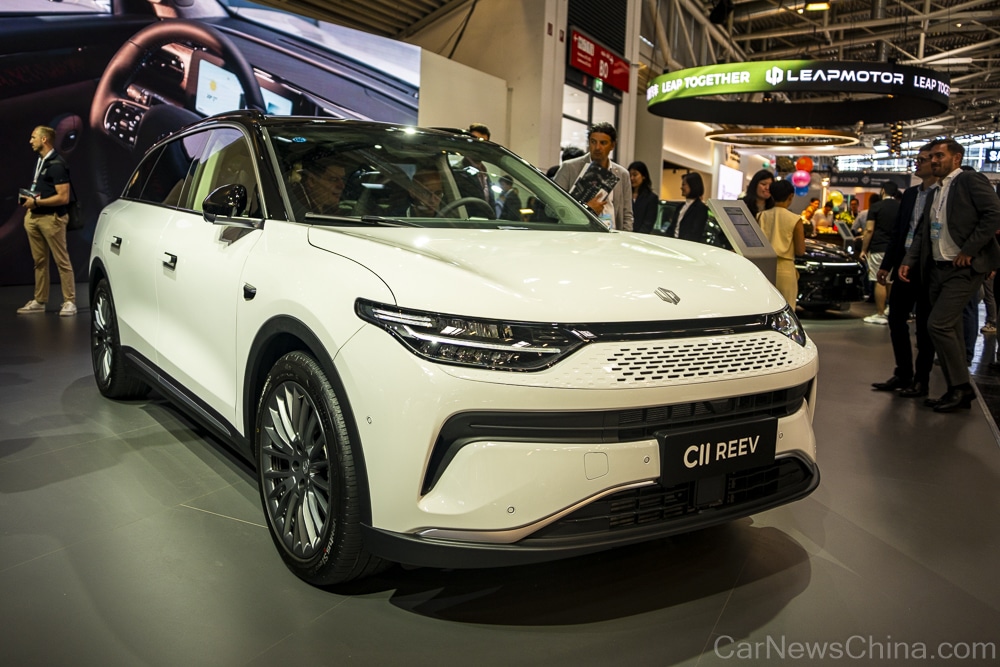意见 欧盟关税会产生影响吗?
去年,中国成为全球销量最大的汽车出口国,但欧盟委员会对中国电动汽车补贴的调查却给中国带来了挫败感
 去年,中国成为全球销量最大的汽车出口国,但去年 9 月启动的欧盟委员会对中国电动汽车补贴的调查给中国带来了挫败感。最后,昨天(6 月 12 日)欧盟委员会 (EC) 得出结论,中国的纯电动汽车 (BEV) 及其供应链受益于不公平的补贴。进口到欧盟的中国电动汽车已被征收 10% 的关税,但除非能与中国当局达成解决方案,否则将从 7 月 4 日起加征 17.4% 至 38.1% 的新关税。
去年,中国成为全球销量最大的汽车出口国,但去年 9 月启动的欧盟委员会对中国电动汽车补贴的调查给中国带来了挫败感。最后,昨天(6 月 12 日)欧盟委员会 (EC) 得出结论,中国的纯电动汽车 (BEV) 及其供应链受益于不公平的补贴。进口到欧盟的中国电动汽车已被征收 10% 的关税,但除非能与中国当局达成解决方案,否则将从 7 月 4 日起加征 17.4% 至 38.1% 的新关税。
很容易得出结论,上汽集团是最大的输家,因为它受到的关税最高为38.1%,并且是唯一一家征收超过21%关税的生产商。然而,虽然上汽确实是一家big 失败者,他们不是唯一一家公司,关税带来的许多连锁反应可能相当令人惊讶。
根据美国彼得森国际经济研究所的数据,2020 年至 2023 年间,欧盟从中国进口的电动汽车数量大幅增加,从去年的 57,000 辆增至约 437,000 辆。然而,大部分增长都是通过隐形方式进行的,许多进口汽车不易被识别为中国汽车。根据施密特汽车研究公司的数据,自2021年以来,到今年前四个月,中国制造的纯电动汽车的渗透率一直停滞在20%左右。在此期间唯一发生变化的是中国制造的中国品牌汽车与外国品牌汽车的混合情况,其中中国品牌的比例从 4% 左右上升到了总数的一半左右 (10%)。 Merics 的图表显示,截至 2022 年 3 月,事实上,欧盟进口的中国电动汽车中只有 2% 带有中国品牌,其中 35% 是中国拥有的欧元名爵、Polestar等知名品牌。该图表显示,特斯拉占了进口量的近一半(49%),尽管此后这一比例似乎有所下降。
- 广告 -特斯拉可能仍然是欧盟关税的最大输家之一。虽然 Model Y 现在是在德国工厂生产的,但所有 Model 3 汽车都是从中国进口到欧洲的。去年,特斯拉上海工厂生产了 947,000 辆汽车,其中约 600,000 辆交付中国市场,其余出口。根据欧盟关税,特斯拉将从中国进口的产品将被征收21%的关税a、特斯拉已经表示,考虑到关税,很可能从7月1日起在欧盟提高售价,但尚未透露实际的涨价幅度。去年,Model 3 是欧盟第二畅销的纯电动汽车,Model Y 排名第一,销量为 101,313 辆。正如我们报道的那样,特斯拉已要求单独审查以确定关税,无疑是希望将目前的 21% 水平降低。
去年,MG4 在欧盟最畅销的 10 款纯电动汽车中排名第六,销量为 72,421 辆。目前尚不清楚上汽去年在欧盟销售了多少辆电动汽车,尽管该公司在欧洲总共销售了超过 20 万辆汽车(包括 ICE)。国家工商总局6月13日致信表示对这一裁决的不满,并重申其对自由贸易和公平竞争原则的承诺。上汽称计划在欧盟开始生产,讽刺的是上汽此前曾在英国长桥工厂进行CKD组装直到2016年,欧盟对上汽集团征收了38.1%的最高关税,因为它认为上汽集团作为一家国有企业,享受了一些最高的补贴。上个月我们报道称,上汽集团与宁德时代、比亚迪、一汽、吉利和威狮一起获得了 60 亿元人民币(8.27 亿美元)的固态电池研发补贴。
去年欧盟第十畅销纯电动汽车 Dacia Spring 也是中国制造。这是目前在欧盟销售的许多显然不是中国制造的汽车的典型特征,其中包括宝马、沃尔沃和 Polestar 等品牌的汽车。
- 广告 -欧洲生产
早期迹象表明,外资原始设备制造商正在放弃将中国作为出口电动汽车的生产基地。今年早些时候,Autocar 报道称,由于环境变化,达契亚 Spring 的生产可能会转移到欧洲。目前,该车由东风公司生产,雷诺此前曾与东风公司合资。
最引人注目的遣返可能是 BMW iX3。现有一代于 2020 年开始生产。当时宝马可以选择在三个工厂中的任何一个生产:中国沉阳、美国斯巴达堡或南非比勒陀利亚。考虑到中国电动汽车市场的发展方式,将 X3 电动版集中生产在中国工厂是完全合理的。不过,下一代iX3将首先在宝马位于匈牙利的新工厂生产,随后也在中国生产。匈牙利工厂显然将处理欧盟和美国的目的地d 汽车,很可能意味着中国生产再次仅限于中国。
只有上汽集团、吉利汽车和比亚迪这三个中国生产商受到了抽样关税,其余的则被征收 21% 的固定关税。吉利控股的沃尔沃、Polestar、Zeekr等品牌均需缴纳20%的税率。根据 Schmidt Automotive Research 的数据,沃尔沃 EX30 是 4 月份中国对欧盟出口的最大贡献者之一,但该车型将于 2025 年将生产转移到比利时根特。
即使是中国生产商也在考虑欧洲生产,这肯定可以避免关税问题。被征收17.4%关税的比亚迪计划在匈牙利建设一座年产能20万辆的工厂。奇瑞选择了巴克其工厂的elona和零跑车型将在波兰的Stellantis工厂生产。与此同时,长城汽车目前正在积极从候选名单中选择地点,正如前面提到的,上汽集团也在考虑生产。
如果特斯拉无法与欧盟达成协议,它也可能被迫在欧洲生产 Model 3,以规避关税问题。
一切照常
法新社报道称,德国基尔世界经济研究所估计,20%的关税将导致运往欧洲的中国电动汽车减少12.5万辆。我们并不那么容易相信,并且认为,尽管未来几年生产将有一些转移到欧盟,但中国公司和欧盟生产商都不会阻止将中国作为对欧盟的整体出口基地。
目前,大众汽车集团似乎没有改变从中国出口 Cupra Tavascan 的计划。同样,也没有任何消息称t 宝马与长城合资生产电动Mini车型并出口将受到影响。
此外,正如我们之前报道的那样,中国生产商目前在欧盟销售的汽车所获得的利润比在中国销售的汽车高得多,部分原因是中国的激烈竞争压低了价格。如果荣鼎集团的预测是正确的,比亚迪可以轻松吞下 17.4% 的关税,并且仍能获得比在中国销售更多的利润。还应该指出的是,比亚迪在欧洲的销量仍然很小,2024 年前四个月在欧盟的注册量仅为 9,970 辆。
许多人似乎没有谈论的另一个因素是,人们在欧洲市场使用的许多数字包括英国,英国不再是欧盟的一部分,因此不受关税影响s。英国于 2022 年成为中国汽车(包括电动汽车)的最大进口国之一,部分原因是通过 MG 和 Lotus 等品牌与中国汽车行业的联系。
资料来源:上汽集团、荣鼎集团、法士特科技、
免责声明:本文观点来自原作者,不代表Hawk Insight的观点和立场。文章内容仅供参考、交流、学习,不构成投资建议。如涉及版权问题,请联系我们删除。